
Honduras (Part 1): Border to Border in Less Than 48 Hours
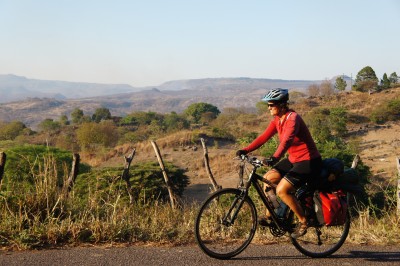
It’s impossible to capture a country in only two days, and what we’ve seen from Honduras is only a corner, the tip of the iceberg. Although speaking of ice in Honduras does not describe our experience in the country. Our experience was a hot one.
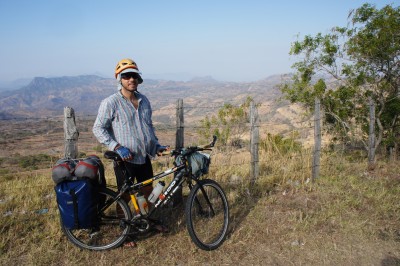
We crossed the border from Nicaragua through the surprisingly quiet border at El Espino. We had spent that day in the Canyon de Somoto, still on the Nicaraguan side. We arrived to the border in the late afternoon tired and sweaty after a long climb. A Canadian couple crossed on foot just after us. While they waited for the bus from the border, we cycled the 12km to San Marcos de Colon, the first village after the border. Funnily enough we arrived at the same time.

The next day took us through one of the nicest descents so far, a 30km long downhill, not too steep with little traffic. Unfortunately it took us to one of the hottest areas in the region, an area nicknamed “the boiler” by locals. After spending about ten days up on the hills in some cooler areas this heat was a bit of a shock.
We went back to the old routine of wetting our clothes whenever possible, using water hoses in gas stations and water wells at locals’ houses. It makes a huge difference but unfortunately our clothes don’t stay wet long enough.

We entered the city of Choluteca, a relatively big city. We wouldn’t have entered this humid hot city but we were on a mission – we had to replace my rack. The day before, still in Nicaragua, I suddenly couldn’t move my back wheel. A quick look and we saw that the rack broke, luckily it happened while I was stopped at the side of the road. Gili is a duct tape person and he repaired the damage with some serious layers of duct tape. It was obviously a temporary solution, and the rack couldn’t hold much weight. We did some shuffling of our stuff, putting even more weight on Gili’s bike.
Now how would we find a bike shop in a city of over 150,000 people? Like he dropped down from the sky, we met Ohel, dressed all in white, riding a road bike and with the most artistic hair cut I’ve ever seen. We followed him to two bike shops that didn’t have an appropriate rack. The next solution was to find someone who could solder aluminium, supposedly a tough call. Of course Ohel knew just the place, and took us there. Within five minutes I had my old rack fixed and spray painted black, let’s just hope it will hold.
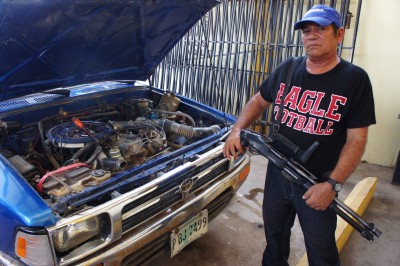
There were a few things we noticed in Honduras that were different from other places. One thing is weapons. Guards with shotguns were guarding the banks, gas stations, big stores and even the car mechanic shop. The second thing was garbage – it’s definitely the dirtiest place we’ve cycled so far, with piles of garbage all along the road.
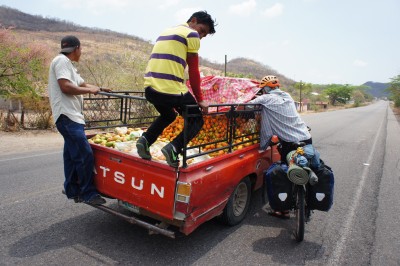
We arrived to the fishing town of San Lorenzo at dusk. The town did not look very appealing, and the rooms were overpriced. We ended up in a sketchy hotel (but very cheap, at least) on the main road, with the sound of traffic all night long. The room was run down with peeled walls, beds that have seen better days, and a ceiling fan that was hardly working. Surprisingly we slept very well despite the noise and the heat.
In the morning we encountered a section of the road with lots of traffic. Luckily after about an hour we reached a junction where most of the traffic continued towards the capital and not to the border of El Salvador.
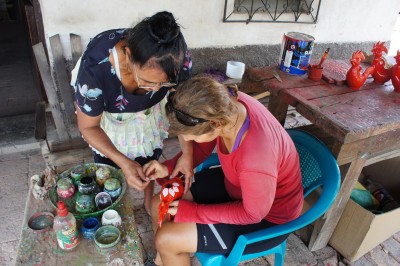
We noticed that on the side of the road many people were making art work with clay. We spent some time with Talbina who specializes in making red clay roosters. She started when she was 14, and today she is over 60 years old and still enjoys making them. It turns out that this is a traditional Lenka (an indigenous group) art form, and down the road we saw a firing kiln in action, with blazing flames.
We were 15km short of the border and we felt that just as we were getting to like Honduras we were leaving it. In less than 48 hours we were already at El Amatillo, the border of El Salvador, a much busier border crossing than the sleepy one we entered Honduras through. We said our farewell to Honduras, at least for now, as we’ll probably return in a few weeks, and off we were to a new adventure in the land of papusas.

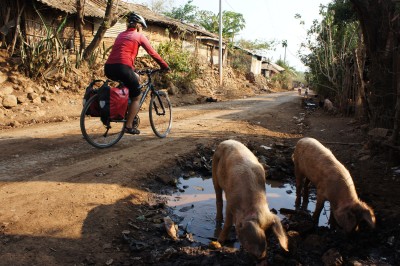
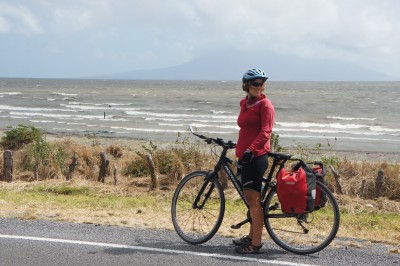
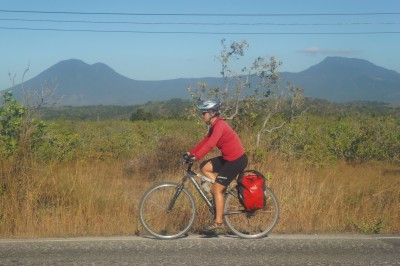
2 Comments
Pingback:
Pingback: